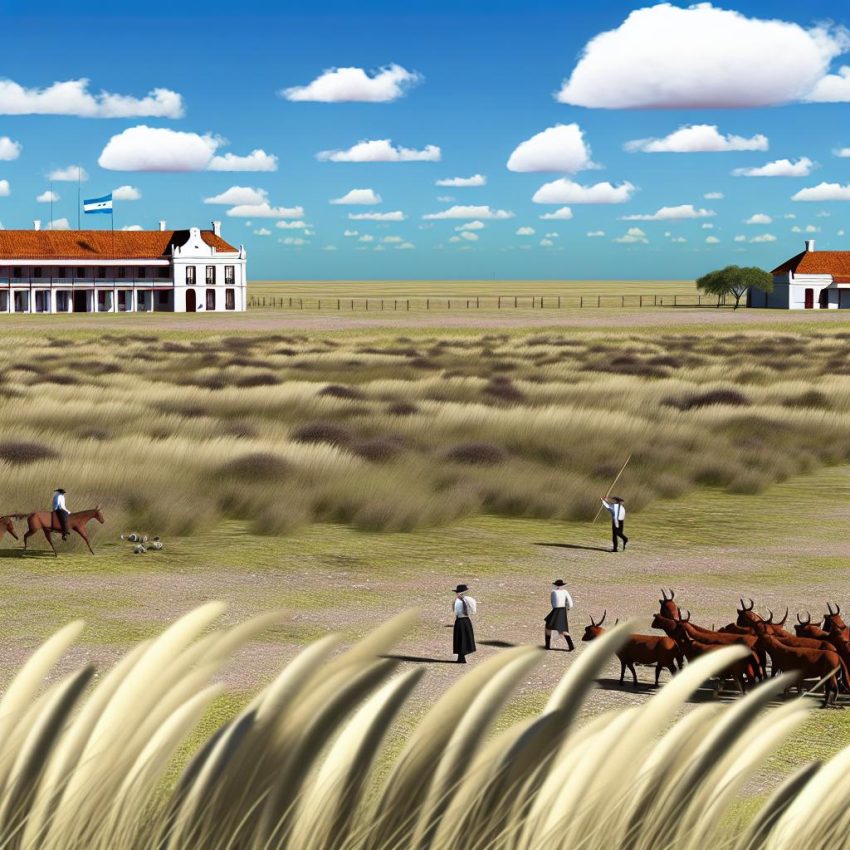Introduction to Estancias in the Pampas
The vast Pampas region of Argentina is renowned for its fertile plains and agricultural heritage. At the heart of this landscape lie the estancias, large rural estates integral to the region’s culture and economy. These expansive ranches play a crucial role in the country’s agricultural output, particularly in cattle ranching and crop farming. Understanding the significance of these estancias involves exploring their history, role in agriculture, cultural significance, and their current role in tourism and modern society.
Historical Overview
Estancias have a history that traces back to the early colonial period when Spanish settlers established them as self-sustaining farms. These properties were initially designed to meet the basic needs of the settlers by utilizing the natural resources available in the Pampas plains. Over time, these farms transformed from modest homesteads into sprawling estates that became symbols of wealth and social status. The grandeur of these estates was not only seen in their size but also in their architectural design.
The architecture of these estates often included grand main houses, or *casas*, which were constructed to reflect the opulence and wealth of their owners. These casas were complemented by extensive outbuildings that served various purposes, from storing farm equipment to housing livestock. The architectural grandeur of the estancias was a reflection of the social and economic status of their owners and played a crucial role in social gatherings and local community life.
Role in Agriculture
The Pampas region, with its fertile soil and favorable climate, presents an ideal setting for agricultural activities. The lush grasses of the Pampas are particularly suited to cattle farming, which has become a principal activity within the estancias. Cattle raised in these pastures form a significant part of Argentina’s beef production, making the country one of the largest producers and exporters of beef globally. This has turned cattle farming into a cornerstone of the Argentine economy, and the Pampas region leads the way in this sector.
In addition to cattle ranching, crop farming is a prevalent practice on these estates. The fertile land is also used for growing key crops such as wheat, corn, and soybeans. This diversification in agricultural activities ensures that estancias maximize land use efficiently, thus enhancing their economic sustainability. The integration of both livestock and crop farming creates a synergistic environment that supports long-term productivity and economic viability.
Cultural Significance
The significance of estancias extends beyond agriculture, deeply ingraining itself into the cultural fabric of Argentina. They are inseparable from the image of the gaucho, the iconic Argentine cowboy. The gaucho lifestyle, embodied by horseback riding, open plain roaming, and specific clothing styles, forms a compelling part of Argentina’s national identity. Estancias often function as cultural hubs where the traditions of the gaucho are preserved and celebrated.
Hosting traditional events and maintaining historical artifacts associated with the gaucho way of life are key components of an estancia’s cultural offering. These estates provide a means to preserve Argentine heritage and offer opportunities for educating both locals and tourists about traditional practices and historical events significant to the region’s identity.
Tourism and Modern-Day Estancias
In the contemporary landscape, many estancias have evolved beyond agricultural and cultural preservation roles, venturing into the tourism sector. They open their doors to visitors who wish to experience rural life in the Pampas firsthand. This evolution into tourism has provided an avenue for economic diversification, keeping the estates financially viable and vibrant in today’s world.
Visitors to estancias are offered a plethora of activities. These range from horseback riding across the expansive landscapes to participating in cattle drives and engaging in authentic Argentine culinary experiences. Such activities not only provide entertainment but also an immersive experience into the everyday life and customs of the region. Furthermore, staying at an estancia offers guests an opportunity to enjoy the tranquility and natural beauty unique to the Pampas, away from the hustle and bustle of urban centers.
Engagement with tourists also offers estancias a platform to educate visitors about the importance of sustainable agricultural practices and the historical significance of these estates. For those interested in exploring the region’s cultural offerings, additional resources and tours can be found at Estancia Tours.
Conclusion
Estancias in the Pampas are more than just agricultural hubs; they are deeply embedded cultural landmarks offering rich insights into Argentine heritage. They stand as significant contributors to the country’s economy through agriculture, embody the essence of regional culture through their association with the gaucho, and provide contemporary relevance through tourism. These estates reflect the spirit and traditions of the Pampas region, serving as a living testament to the country’s vibrant history and rich culture. Through a blend of agricultural innovation, cultural preservation, and modern tourism, estancias remain vital and dynamic components of Argentina’s identity, bridging the historical past and the present.

